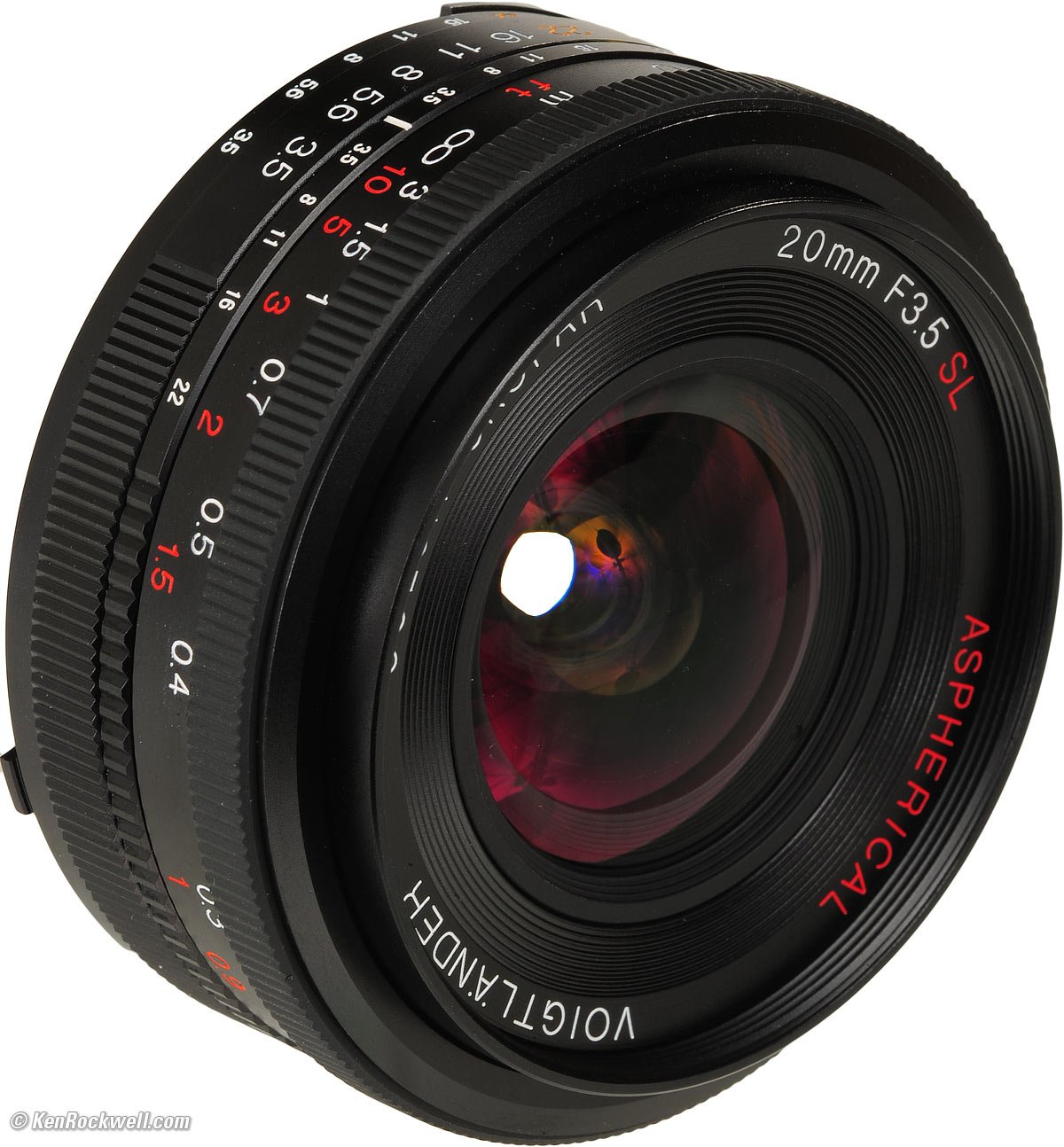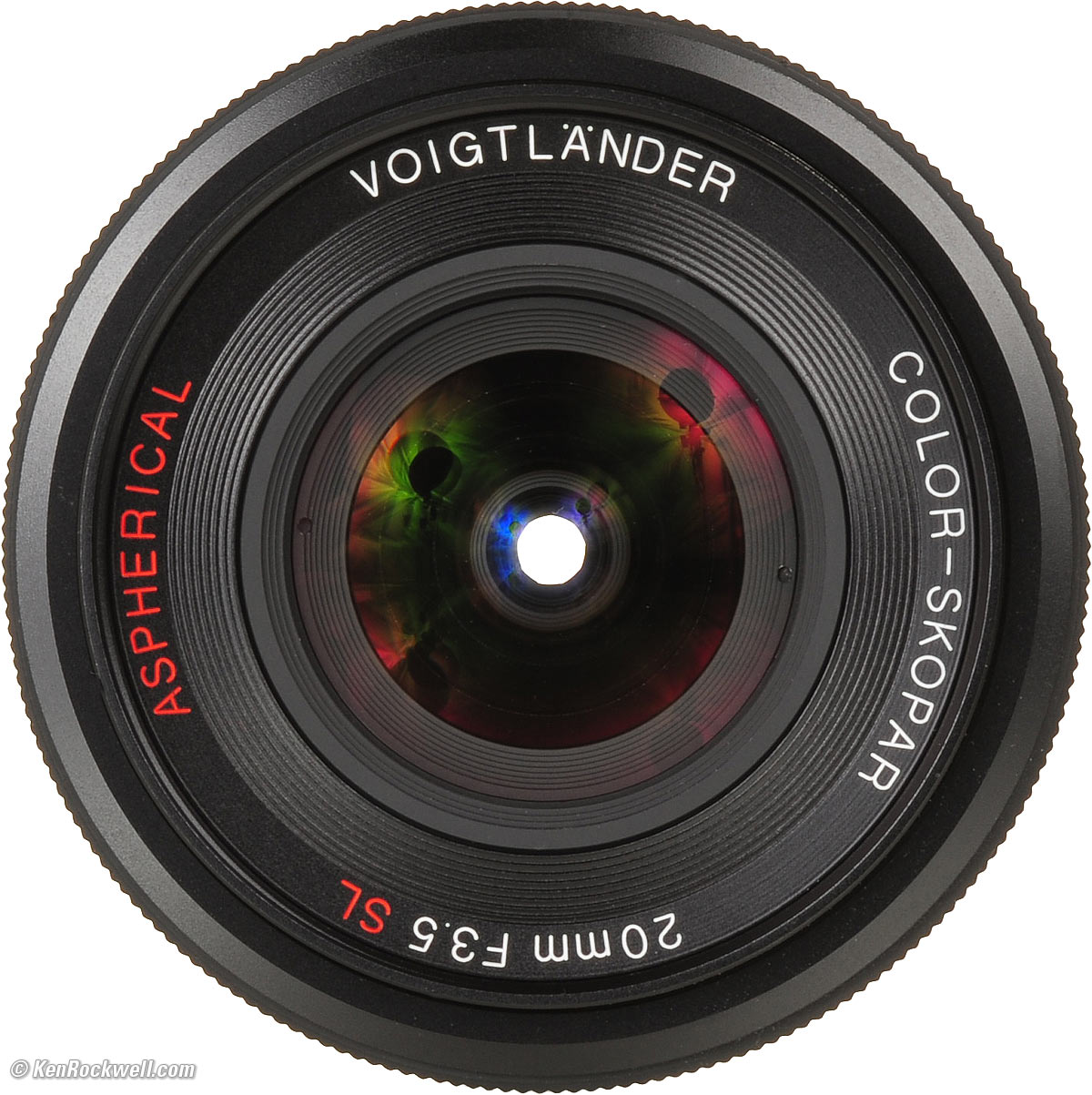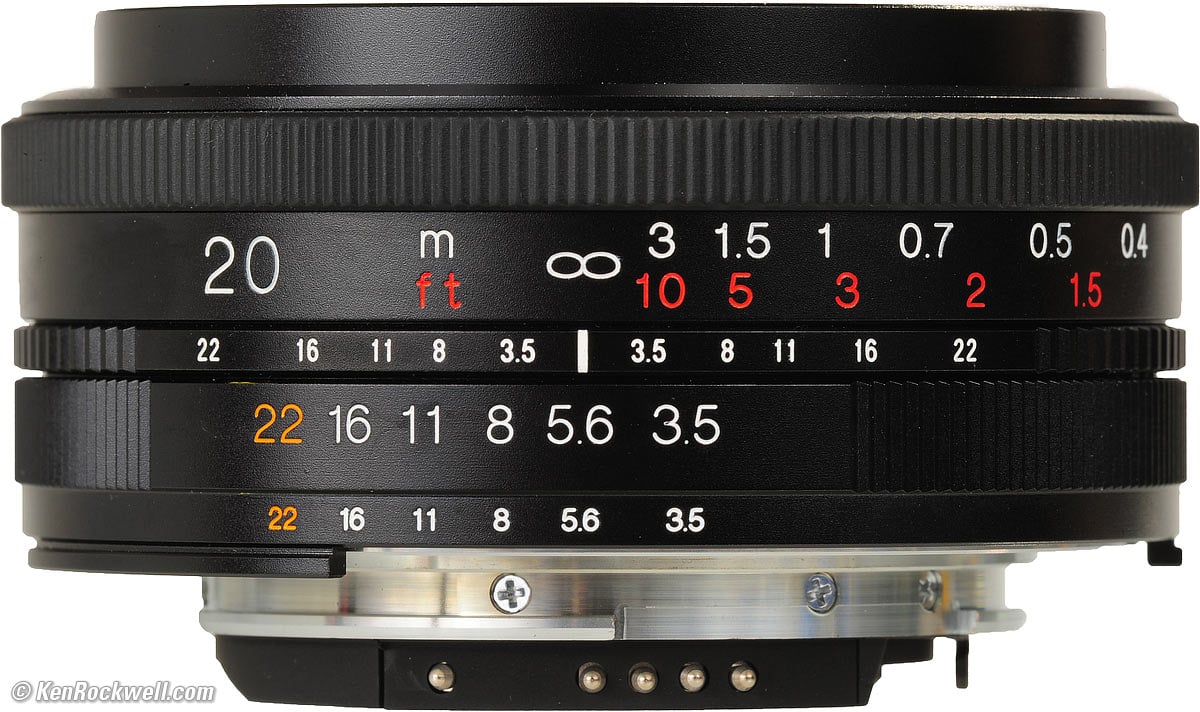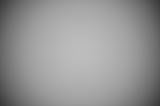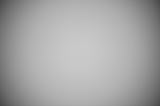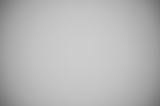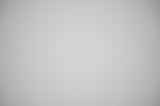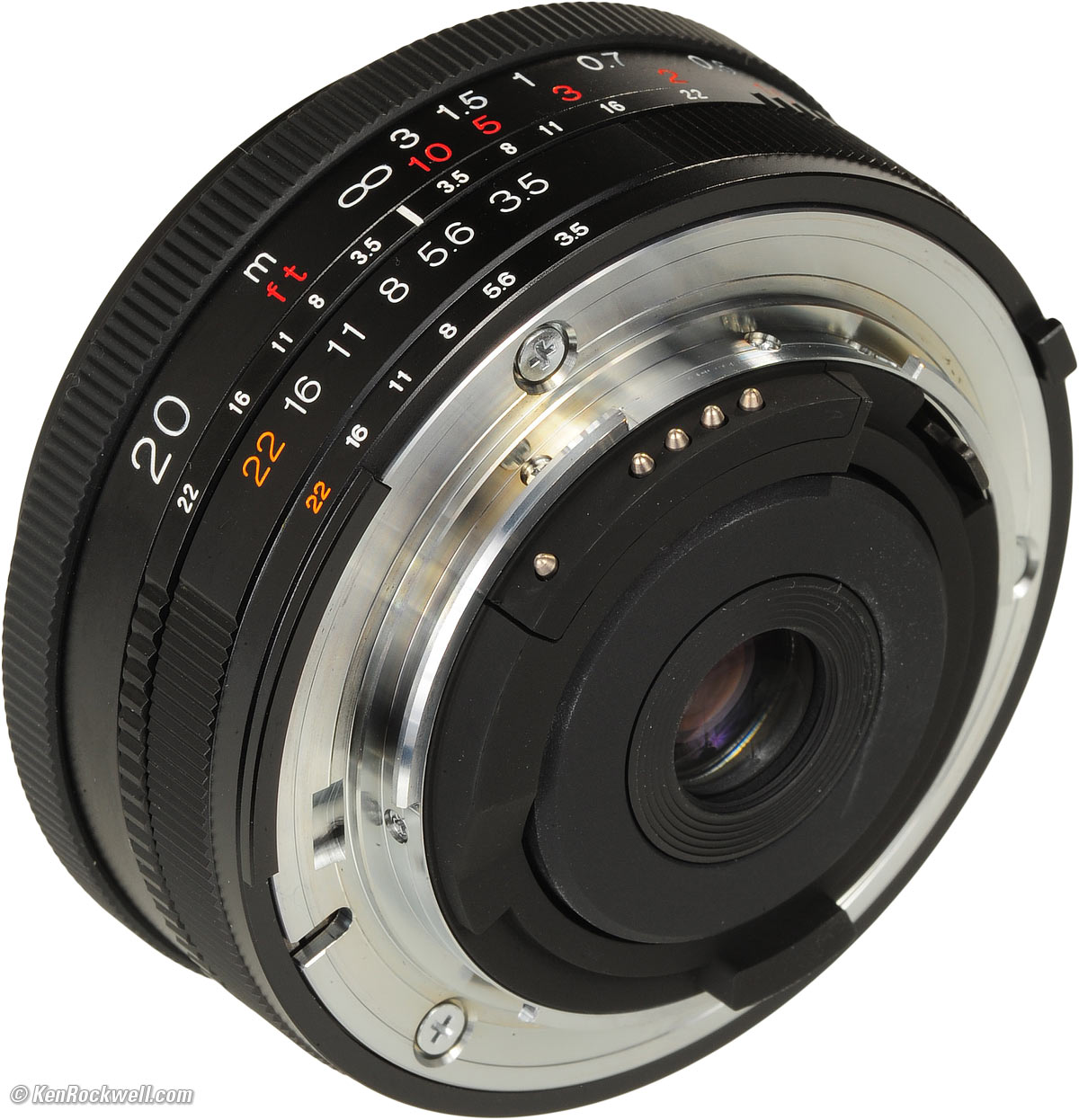Voigtländer 20mm f/3.5
SL-II Aspherical AI-P (2009- )
Performance Compared Recommendations
Voigtländer 20mm f/3.5 SL-II, Nikon mount, much larger than actual size. enlarge more. (52mm filters, 7.0 oz./199g, about $499. Also comes for Canon EOS mount.) I got mine at Adorama; it's also at Amazon.
This all-content, junk-free website's biggest source of support is when you use those or any of these links to my personally-approved sources when you get anything, regardless of the country in which you live. Voigtländer does not seal its boxes in any way, so never buy at retail or any other source not on my personally approved list since you'll have no way of knowing if you're missing accessories, getting a defective, damaged, returned, store demo or used lens. Get yours only from the approved sources I use myself for the best prices, service, return policies and selection. Thanks for helping me help you! Ken.
July 2017 Voigtländer Nikon Canon LEICA Zeiss Fuji Sony All Reviews
Sharpness Comparison to other 20mm lenses
Ideal Uses
Ultra-compact, high-performance ultrawide lens.
Not for
No autofocus; I wouldn't use it for sports, kids or action since it's too hard for me to track focus by hand.
For the same price, you can get the real manual-focus Nikon 20mm f/2.8 AI-s or autofocus Nikon 20mm f/2.8 AF-D.
| Optics: | |
| Ergonomics: | |
| Usefulness: | |
| Availability: | |
| Overall: |
Introduction top
Top Intro Compatibility Specifications
Performance Compared Recommendations
|
I buy only from these approved sources. I can't vouch for ads below. |
This Voigtländer 20mm f/3.5 SL-II is a very compact ultrawide lens that comes in versions for Nikon, Canon EOS and Pentax. (The Pentax mount has been discontinued from lack of interest.)
This Voigtländer. is even smaller and lighter than Nikon's smallest 20mm lens, the Nikon NIKKOR 20mm f/4.
I am addressing the Nikon version here, and using it on full-frame. You may make the usual inferences when used on different cameras or formats. I'll compare it to Canon lenses, too, if you read the review carefully.
It works great on just about any camera, especially on Nikon FX and Canon full-frame cameras.
It's a joy to use: its focus feels better than my Nikon lenses!
The performance of this tiny Voigtländer lens is as good as Nikon's lenses, regardless of size.
Compatibility
The Voigtländer 20mm f/3.5 is a manual-focus lens, and has an on-board computer to work with the meters and electronics all Nikon manual focus, autofocus and digital cameras.
So long as you don't mind moving the ultra-smooth focus ring all by yourself, this AI-P type lens should be compatible with every Nikon made since 1977.
The Canon version also has CPU contacts for what should be complete compatibility with metering and exposure automation on any of the Canon EOS 35mm and digital cameras made from 1987 through today. You have to focus by hand (look for the AF sensor blips to confirm focus instantly), and otherwise you're all set.
Voigtländer 20mm f/3.5 SL-II. enlarge.
Specifications
Top Intro Compatibility Specifications
Performance Compared Recommendations
Name
Cosina calls this the Voigtländer Color-Skopar 20mm f/3.5 SL-II ASPHERICAL.
Color-Skopar is an old trademark dredged-up from the 1950s, as is the Voigtländer name.
Optics top
9 elements in 6 groups.
One aspherical element.
Multicoated.
Focal Length: 20mm, which looks like 30mm when used on DX.
Angle of View top
94° on FX and 35mm.
71° on small-format DX.
Diaphragm top
Voigtländer 20mm f/3.5 SL-II at f/5.6. enlarge.
9 blades.
Circular to f/5.6, nonagonal from f/11.
Stops down to f/22.
Aperture Ring top
Yes.
Metal.
Full-stop clicks, except that Voigtländer forgot the click at f/4!
Close Focus top
0.65 feet (0.2 meters or 8 inches).
Maximum Reproduction Ratio top
1:6.1.
Hard Infinity Focus Stop? top
Yes.
This is great for astronomy; just turn to the stop and you have fixed laboratory-perfect focus all night.
Focus Scale top
Yes.
Depth-of-Field Scale top
Yes.
Infra-Red Focus Index top
No.
Filter Thread top
52mm, metal.
Does not rotate.
Size top
1.128" (28.64mm) extension from flange by x 2.51" (63.7mm) diameter, measured.
Voigtländer specifies 28.8mm extension from flange by 63mm diameter.
Weight top
7.040 oz. (199.5g), measured.
Voigtländer specifies 205g.
Hood top
Optional LH-20, $45!
Made in top
Japan.
Packaging top
It comes in a small, semi-glossy black corrugated cardboard box with two white foam inserts.
Price, USA top
$499, July 2017.
$550, September 2010.
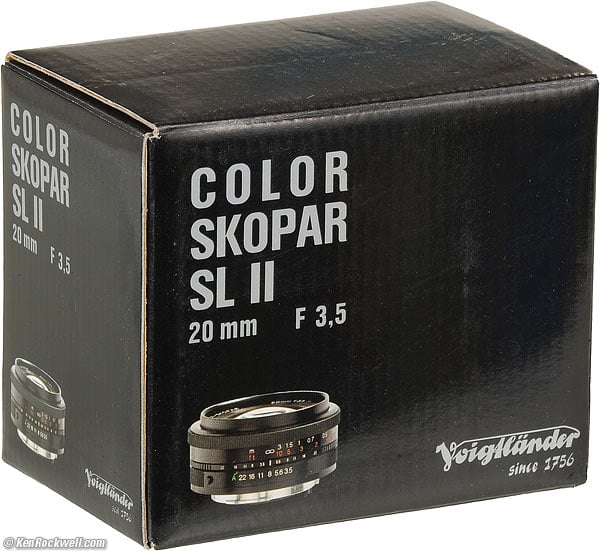
Box, Voigtländer 20mm f/3.5 SL-II.
Performance
Top Intro Compatibility Specifications
Performance Compared Recommendations
Overall Focus Color Distortion Ergonomics Falloff
Filters Color Fringes Macro Mechanics Sharpness Sunstars
Overall performance top
The 20mm f/3.5 SL-II is a sharp, ultra-compact, well-made lens.
Its performance is similar to Nikon's lenses, but smaller in size and works better with filters.
I'm referring to its performance on Nikon below. I tried this Nikon-mount sample with a crummy adapter on a 5D Mark II, and it didn't work anywhere near as well optically as a Canon 16-35mm f/2.8 L II. I suspect the proper Canon-mount version should perform much better on Canon.
Focus performance top
Manual focus is beautiful. It's as smooth as silk, perfectly damped with no play.
The D3, D3X, D3s, D700, F4, F5, F6 and most professional AF cameras have three very precise electronic manual focus indicators, with which this lens works perfectly.
Lesser digital cameras, like the D300s and down, usually have just one "OK" focus dot, which is not as precise as two arrows and a dot.
Color Rendition performance top
Color Balance
I see no difference from my multicoated NIKKOR lenses.
Using this Nikon-mount sample with a crummy adapter on a 5D Mark II, it was somewhat warmer than a Canon 16-35mm f/2.8 L II. I don't know if the correct electronics of the proper Canon-mount version would key-in the correct data for better auto white balance better, possibly it does.
Peripheral Color Shift
Because most anti-reflection coatings become differently efficient at different angles, often ultra-wide lenses show color shifts towards blue in the corners. This has been around since film; it's not an artifact of electronic sensors.
The only lenses that have licked this well are the Nikon 16-35mm and Nikon 14-24mm.
This Voigtländer is also pretty good; I really have to go out of my way to see any shift towards blue in the corners.
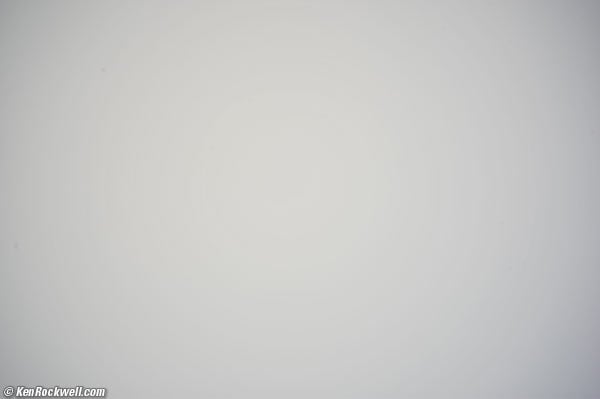
Full-Frame Color Rendition, f/8.
With a flat plate it looks pretty scary, but actually, it's invisible in real photos.
Distortion performance top
The Voigtländer 20mm f/3.5 has a little more distortion than Nikon's 20mm fixed lenses.
On Full Frame
Distortion is complex on full frame, similar to Nikon's fixed 20mm lenses, just a little more of it.
It's bulged-out in the center and pulled-out towards the sides.
Vertical straight lines stay straight, except about 1/4 to 1/2 of the way out from the center. Along the sides, they stay straight.
A line near and along the long edge of the frame bends and wiggles, as with Nikon's fixed 20mm lenses, just a little more.
On DX
Not that it makes any sense to use this lens on DX (since even the kit 18-55mm DX lenses cover 20mm, for free), but if you do, distortion is strong, but simple and easy to correct.
Corrections
To correct the distortion on full-frame, you need a complex tool beyond Photoshop's simple 1st-order lens distortion filter.
On DX, you're fine.
Try these coefficients in Photoshop's lens distortion filter:
FX and Film |
||
10' (3m) |
0 to -1 |
+2.0 |
© 2010 KenRockwell.com. All rights reserved.
On FX, it's best to leave it alone. If you add -1, you'll bug-out the center even more, and if you leave it alone, the sides pull out. You can't win.
On DX, it corrects completely.
Ergonomics performance top
Voigtländer 20mm f/3.5 SL-II. enlarge.
The Voigtländer 20mm f/3.5's ergonomics are perfect.
The focus and aperture controls are just right!
Likewise, the grab ring in the middle works great for mounting and unmounting, but is is pretty small.
The red numbers are almost invisible in actual use; they are greatly enlarged and enhanced here for the sake of a pretty picture.
Here are the colors as they actually look, at about actual size on most computer monitors (106 DPI):
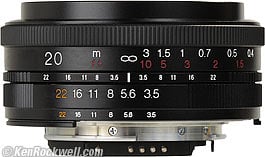
Actual size and color at 106 DPI.
Falloff (darkened corners) performance top
Falloff on FX is visible at f/3.5 and f/4, still there at f/5.6, and gone by f/8.
I've exaggerated this by shooting a gray field and placing these on a gray background:
Voigtländer 20mm f/3.5 SL-II falloff on FX and 35mm film at infinity, no correction.
© 2010 KenRockwell.com. All rights reserved. |
Filters, Use with performance top
Filter users rejoice: I easily can stack two Nikon filters and get no vignetting on full-frame!
This is better than any of Nikon's 20mm lenses or zooms. Bravo!
I have to stack three 52mm Nikon filters to start getting any vignetting.
Even though a standard thick rotating polarizer works without vignetting, don't use a polarizer; they don't work with well with any 20mm lens because the polarization of nature itself varies over such a broad angle.
Lateral Color Fringes performance top
There are no lateral color fringes on the Nikon D3, which automatically corrects them.
I tried this Nikon-mount sample with a crummy adapter on a 5D Mark II, and it has magenta-green lateral fringes. Its lateral fringes are almost identical to the Canon 16-35mm f/2.8 L II at 20mm.
Macro performance top
This Voigtländer lens focuses more closely than other 20mm lenses, but it still doesn't do macro. Here's how close you get on full-frame:
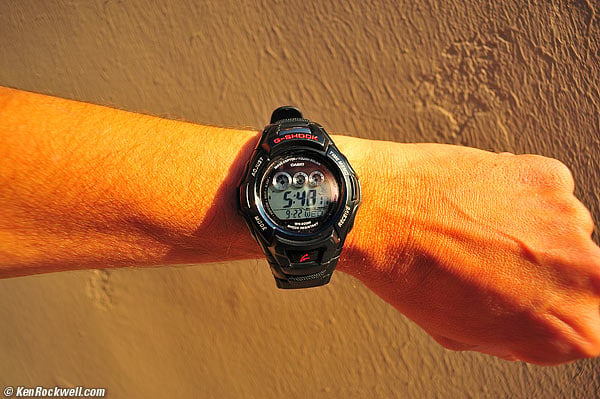
On full-frame at 0.2 meters.
Here's a crop at 100% from this image, which is pretty darn sharp:
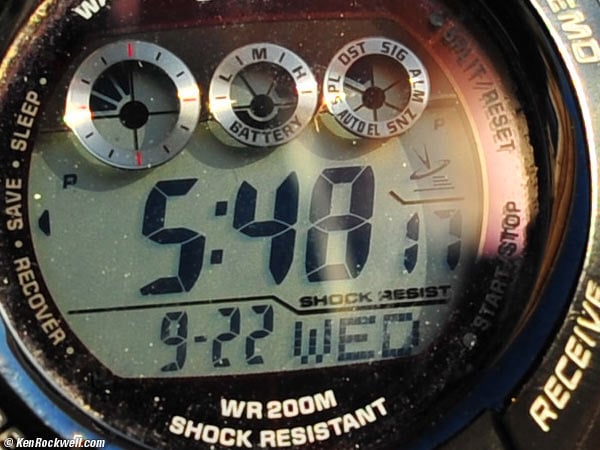
Crop from above.
Mechanics performance top
Voigtländer 20mm f/3.5 SL-II. enlarge.
The Voigtländer 20mm f/3.5 SL-II is built very well.
Barrel Exterior
Anodized aluminum (no enamel).
Filter Threads
Anodized aluminum.
Filter Adapter and Hood
Threaded anodized aluminum, engraved.
Focus Ring
Metal, rubber covered.
Focus Helicoids
Feels like brass: smooth and silky with no play or need for damping grease.
Depth-of-Field Scale
Engraved into barrel and filled with paint.
Internals
All metal.
Aperture Ring
Machined anodized aluminum.
Engraved markings.
Mount
Dull-chrome.
Markings
Engraved into the metal and filled with paint.
Identity and Serial Number
On the bottom of the barrel, engraved into the metal and filled with paint.
Ass-Gasket (dust seal at mount)
No.
Noises When Shaken
Clicking from the diaphragm blades and actuation system.
Made in
Japan.
Sharpness performance top
Warning 1: Image sharpness depends more on you than your lens.
Warning 2: Lens sharpness doesn't mean much to good photographers.
The 20mm f/3.5 SL-II is as sharp, sometimes better and sometimes worse, as Nikon's other 20mm lenses and zooms.
This Voigtländer is the same or better than Nikon at f/3.5 and f/4, and the same or worse when stopped down.
The differences are amazingly minor; these lenses are all pretty much the same overall.
See my Sharpness Comparison to other 20mm lenses for more.
This said, this lens is sharp all over at every aperture. Unlike most lenses, its performance doesn't vary much with aperture.
When I tried this Nikon-mount sample with a crummy adapter on a Canon 5D Mark II, it was much softer than a Canon 16-35mm f/2.8 L II at 20mm. I suspect the proper Canon-mount version will perform much better on Canon.
Sunstars performance top
At smaller apertures, the diaphragm takes on straight sides and its 9-bladed diaphragm will make great 18-pointed sunstars.
Compared
Top Intro Compatibility Specifications
Performance Compared Recommendations
This lens is smaller and lighter than anything from Nikon, ever.
Flare and ghost performance are much better than any of Nikon's fixed 20mm lenses or most zooms. The Nikon 16-35mm VR and 14-24mm are as ghost resistant as this Voigtländer.
Sharpness is about the same, see my Sharpness Comparison to other 20mm lenses for details.
Distortion is a very little bit worse.
The biggest difference, other than size, is that it's easy to use at least two stacked filters with no vignetting on full-frame, something impossible with any fixed Nikon 20mm lens.
Falloff is the same as Nikon's lenses.
Comparing a Nikon-mount sample on a crummy adapter on a Canon 5D Mark II, it was much softer than a Canon 16-35mm f/2.8 L II at 20mm. I suspect the proper Canon-mount version will perform much better on Canon.
| Anni | 2010- |
2009- |
1984- |
1977-1984 |
1974-1978 |
1967-1974 |
| Filter | 77mm |
52mm |
62mm |
52mm |
52mm |
52mm |
| Threads | Plastic |
Metal |
Metal |
Metal |
Metal |
Metal |
| Barrel | Plastic |
Metal |
Metal |
Metal |
Metal |
Metal |
| Weight | 678g |
199.5g |
259g |
232g |
209g |
388g |
| Weight | 23.9 oz. |
7.040 oz. |
9.1 oz. |
8.2 oz. |
7.4 oz. |
13.7 oz. |
| Price, USA, September 2010 |
||||||
| Price, USA, July 2017 |
Recommendations
Top Intro Compatibility Specifications
Performance Compared Recommendations
The Voigtländer 20mm f/3.5 SL-II is an optically and ergonomically superb lens, but it's too expensive. For the same price, you can buy the real manual-focus Nikon 20mm f/2.8 AI-s or autofocus Nikon 20mm f/2.8 AF-D.
The reasons to get this Voigtländer over Nikon is:
Small size and weight.
Better ability to use stacked filters.
Much better ghost resistance than Nikon's fixed 20mm lenses, but same as 16-35mm VR and 14-24mm.
If this is what you want, go for it, but do consider treating yourself to a brand-new Nikon 20mm f/2.8 AI-s.
This Voigtländer lens gives the same optical performance as the 16-35mm VR and 14-24mm, albeit with more distortion, but with only one-third to one-fifth the weight, and a fraction of that volume.
Don't let me whine too much about price; this lens is made by the same company that makes the Zeiss lenses that are way too big and sell for even more money. I'd be much more likely to buy one of these Voigtländer lenses for myself (I did buy the 40mm f/2) than any of Zeiss' behemoths.
I can't speak for the Canon version. A Nikon-mount sample on a crummy adapter on a Canon 5D Mark II was much softer than a Canon 16-35mm f/2.8 L II at 20mm, and I hope the proper Canon-mount version, which I have not evaluated, will perform much better.
Deployment top
I'd pitch the 52mm Voigtländer cap and get a new 52mm "pinch" type Nikon cap.
The very best protective filter is the Multicoated Hoya HD3 52mm UV which uses hardened glass and repels dirt and fingerprints. It's expensive, but it will last forever long after this lens is gone.
For less money, the B+W 52mm 010 is an excellent filter, as are the multicoated B+W and the basic multicoated Hoya filters and the most basic Hoya multicoated filter, but the Hoya HD3 is the toughest and the best.
Filters last a lifetime, so you may as well get the best. The Hoya HD3 stays cleaner than the others since it repels oil and dirt.
If I was working in nasty, dirty areas, I'd forget the cap, and use an uncoated 52mm Tiffen UV filter instead. Uncoated filters are much easier to clean, but more prone to ghosting.
For color slides like Velvia 50, I use an old Nikon A2 or new 52mm Hoya HMC 81A outdoors.
For B&W film outdoors, I'd use an old Nikon Y48 or O56, or a new 52mm Hoya HMC K2 Yellow or 52mm Hoya HMC Orange.
© Ken Rockwell. All rights reserved. Tous droits réservés. Alle Rechte vorbehalten.
Help Me Help You
I support my growing family through this website, as crazy as it might seem.
The biggest help is when you use any of these links when you get anything. It costs you nothing, and is this site's, and thus my family's, biggest source of support. These places always have the best prices and service, which is why I've used them since before this website existed. I recommend them all personally.
If you find this page as helpful as a book you might have had to buy or a workshop you may have had to take, feel free to help me continue helping everyone.
If you've gotten your gear through one of my links or helped otherwise, you're family. It's great people like you who allow me to keep adding to this site full-time. Thanks!
If you haven't helped yet, please do, and consider helping me with a gift of $5.00.
As this page is copyrighted and formally registered, it is unlawful to make copies, especially in the form of printouts for personal use. If you wish to make a printout for personal use, you are granted one-time permission only if you PayPal me $5.00 per printout or part thereof. Thank you!
Thanks for reading!
Mr. & Mrs. Ken Rockwell, Ryan and Katie.






